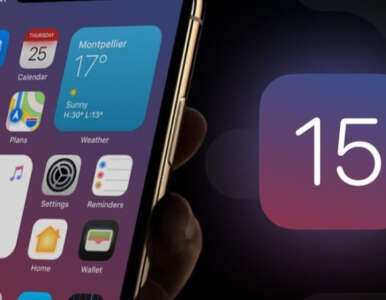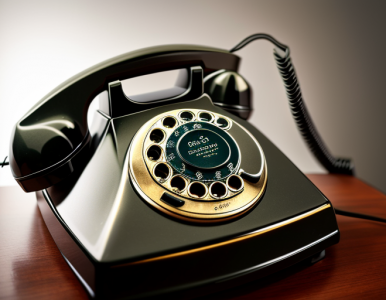The history of the first cell phone is a fascinating journey that has revolutionized the way we communicate. It all began with the early developments in the field of mobile telephony, where inventors and visionaries laid the foundation for this groundbreaking technology.
During the early years, several inventors played a significant role in shaping the concept of a portable communication device. Notable figures such as Martin Cooper, John F. Mitchell, and Dr. Martin Cooper, who is often credited as the father of the cell phone, made significant contributions to its creation.
The breakthrough invention came in 1973 when Martin Cooper made the first-ever call from a handheld mobile phone. This historic moment marked the birth of the first cell phone, known as the Motorola DynaTAC 8000x. It weighed nearly two pounds and had a hefty price tag, but it paved the way for the future of communication.
As the years passed, cell phones evolved rapidly. The size and weight decreased, while the features and capabilities expanded. From basic voice calls to text messaging, internet browsing, and multimedia functions, cell phones became more than just a communication device; they became an essential part of our lives.
The introduction of smartphones brought another revolution in the world of cell phones. These powerful devices combined the functionalities of a phone, computer, camera, and more, all in one compact package. They transformed the way we connect with others, access information, and navigate the digital world.
Looking ahead, the future of cell phone technology holds exciting possibilities. From advancements in artificial intelligence and virtual reality to the integration of innovative features, the potential for innovation is limitless.
The impact of cell phones on society has been profound. They have revolutionized communication, allowing us to stay connected with loved ones, conduct business on the go, and access information instantaneously. However, they have also raised concerns about privacy, addiction, and the erosion of face-to-face interactions.
In conclusion, the first cell phone marked a significant milestone in the history of communication. Its creation paved the way for the remarkable advancements we see today. From its humble beginnings to the smartphone era, cell phones have transformed the way we live, work, and interact with the world around us.
Early Developments
The early developments of the first cell phone marked a significant turning point in the history of communication. It was during the mid-20th century that the groundwork for this revolutionary device was laid. One of the key inventors involved in its development was Martin Cooper, an engineer at Motorola. Cooper is often credited with making the first mobile phone call on April 3, 1973, as he walked the streets of New York City.
However, the concept of a portable telephone had been explored even earlier. In fact, the idea of a wireless communication device can be traced back to the 1940s, when Bell Labs researchers proposed the concept of cellular telephony. The idea was to divide a geographical area into smaller cells, each served by a low-power transmitter and receiver. This would allow for better frequency reuse and more efficient use of the limited available radio spectrum.
Building upon these early developments, a team of engineers at Motorola, led by Cooper, worked tirelessly to bring the first cell phone to life. Their efforts resulted in the creation of the Motorola DynaTAC 8000X, which became commercially available in 1983. This groundbreaking device, although bulky and expensive, laid the foundation for the future of mobile communication.
Breakthrough Invention
The breakthrough invention of the first cell phone marked a significant turning point in the history of communication. It revolutionized the way people connect and paved the way for the modern era of mobile technology. The first cell phone was introduced to the world in 1973 by Motorola engineer Martin Cooper. This groundbreaking moment brought about a new era of wireless communication.
The first cell phone, known as the Motorola DynaTAC 8000X, was a bulky and heavy device weighing approximately 2.2 pounds. It was a far cry from the sleek and compact smartphones we use today. However, its features were revolutionary for its time. The DynaTAC 8000X allowed users to make and receive calls wirelessly, liberating them from the constraints of landline telephones.
| Features of the First Cell Phone |
|---|
| – Ability to make and receive calls |
| – Portable and wireless |
| – Limited battery life |
| – High cost |
Although the first cell phone had its limitations, it laid the foundation for future advancements in mobile technology. It sparked a wave of innovation and competition among manufacturers, leading to the development of smaller, more powerful cell phones with enhanced features.
The breakthrough invention of the first cell phone not only transformed communication but also set the stage for the rapid evolution of mobile devices. It opened up a world of possibilities and set the trajectory for the future of technology.
Evolution of Cell Phones
The evolution of cell phones has been a remarkable journey, marked by numerous advancements and improvements that have shaped the devices we use today. From the bulky and limited capabilities of early cell phones to the sleek and powerful smartphones of the present, the evolution of cell phones has revolutionized communication and transformed our daily lives.
One of the key milestones in the evolution of cell phones was the transition from analog to digital technology. This shift allowed for clearer and more reliable voice calls, as well as the introduction of text messaging. The ability to send short messages quickly and conveniently opened up new avenues for communication.
Another significant development in cell phone evolution was the introduction of smaller and more compact designs. As technology advanced, cell phones became increasingly portable, allowing users to carry their devices with ease. This portability, combined with the growing availability of wireless networks, paved the way for the widespread adoption of cell phones.
The evolution of cell phones also brought about a multitude of features and functionalities. From built-in cameras and music players to internet access and GPS navigation, cell phones have become multi-purpose devices that cater to various needs and preferences. The integration of touchscreens and the development of app ecosystems further enhanced the user experience and expanded the possibilities of what cell phones can do.
In recent years, the evolution of cell phones has focused on improving performance and connectivity. The introduction of 4G and now 5G networks has revolutionized internet speeds and allowed for seamless streaming, gaming, and video calling. Additionally, advancements in battery technology have extended the usage time of cell phones, reducing the need for frequent charging.
Overall, the evolution of cell phones has been driven by the desire to make communication more convenient, efficient, and accessible. With each new generation of cell phones, we witness the continuous innovation and improvement that shape the devices we rely on in our daily lives.
Smartphone Revolution
The smartphone revolution has completely transformed the way we communicate and interact with technology. With the introduction of smartphones, traditional cell phones evolved into powerful devices that not only allow us to make calls and send text messages, but also provide us with access to the internet, social media, and a wide range of applications.
Smartphones have revolutionized communication by making it faster, more convenient, and more accessible. We can now stay connected with friends, family, and colleagues through various messaging apps, video calls, and social media platforms. The ability to instantly share photos, videos, and updates has brought people closer together, regardless of geographical distances.
Moreover, smartphones have become essential tools for productivity and entertainment. We can manage our schedules, check emails, and access important documents on the go. Additionally, smartphones have opened up a world of entertainment options, from streaming movies and music to playing games and reading books.
The impact of smartphones on technology cannot be overstated. These devices have sparked a wave of innovation and development in mobile technology, leading to the creation of countless apps and services that enhance our daily lives. From health and fitness trackers to virtual assistants, smartphones have become an integral part of our modern lifestyle.
In conclusion, the smartphone revolution has had a profound impact on communication and technology. These devices have not only changed the way we connect with each other but have also revolutionized the way we access information, entertain ourselves, and navigate our daily lives.
Future Innovations
Future Innovations
The field of cell phone technology is constantly evolving, and there are exciting possibilities for future developments and innovations. As technology continues to advance at a rapid pace, it is fascinating to imagine what the future holds for cell phones.
One potential future innovation is the integration of augmented reality (AR) technology into cell phones. AR allows users to overlay digital information onto the real world, enhancing their perception and interaction with their surroundings. Imagine being able to see virtual objects or information displayed right in front of you through your cell phone screen. This could revolutionize various industries, including gaming, education, and even healthcare.
Another area of potential innovation is in the field of flexible and foldable cell phones. We have already seen glimpses of this technology with the introduction of foldable smartphones, but the possibilities are endless. Imagine a cell phone that can be folded or rolled up, making it more compact and portable. This could lead to new form factors and designs, as well as improved durability.
In addition, advancements in battery technology could lead to longer-lasting cell phones. Currently, battery life is a common concern for many users. However, with the development of more efficient and powerful batteries, we may see cell phones that can last for days or even weeks on a single charge.
Furthermore, the future of cell phones may involve advancements in biometric technology. We are already familiar with fingerprint sensors and facial recognition, but what if cell phones could also analyze our health and emotions? Imagine a cell phone that can monitor your vital signs, detect stress levels, or even provide personalized health recommendations.
These are just a few examples of the potential future innovations in the field of cell phone technology. As technology continues to progress, we can expect even more exciting developments that will shape the way we communicate and interact with our cell phones.
Impact on Society
The impact of cell phones on society has been profound, affecting various aspects of our lives including communication, business, and social interactions. With the advent of cell phones, communication has become more convenient and accessible. People can now easily connect with each other regardless of their location, bridging the gap between individuals and fostering stronger relationships.
In the business world, cell phones have revolutionized the way we work. They have enabled employees to stay connected and productive even when they are away from their desks. With the ability to make calls, send emails, and access important documents on the go, cell phones have increased efficiency and flexibility in the workplace.
Furthermore, cell phones have had a significant impact on social interactions. They have transformed the way we connect with others, allowing us to stay connected with friends and family through calls, text messages, and social media platforms. Cell phones have also shaped the way we socialize, with features like video calls and instant messaging bringing people closer together, regardless of their physical distance.
Cell Phone Timeline
The cell phone timeline provides a fascinating journey through the significant milestones and advancements in the history of cell phones. From humble beginnings to the sleek and powerful devices we use today, this timeline showcases the evolution of communication technology.
1. 1973 – The First Call: On April 3, 1973, Martin Cooper, a Motorola engineer, made the first-ever cell phone call. The device, known as the Motorola DynaTAC 8000X, weighed nearly 2.5 pounds and had a price tag of $3,995.
2. 1983 – The First Commercial Cell Phone: The Motorola DynaTAC 8000X became available to the public in 1983, marking the birth of commercial cell phones. Though expensive and bulky, it paved the way for future advancements.
3. 1992 – The First Text Message: Nokia introduced the Short Messaging Service (SMS), allowing users to send text messages for the first time. This feature revolutionized communication and laid the foundation for the future of messaging apps.
4. 1999 – The Rise of Mobile Internet: The Nokia 7110, also known as the “Matrix phone,” introduced WAP (Wireless Application Protocol) technology, enabling users to access limited internet services on their mobile devices.
5. 2000 – The Camera Phone: The J-SH04, developed by Sharp, became the world’s first phone with a built-in camera. This innovation transformed the way we capture and share moments, leading to the rise of mobile photography.
6. 2007 – The Era of Smartphones: Apple revolutionized the industry with the introduction of the iPhone. Combining a touch screen interface, internet capabilities, and a wide range of apps, smartphones became an integral part of our daily lives.
7. 2010 – 4G Connectivity: The deployment of 4G networks allowed for faster internet speeds and improved data transfer rates. This advancement opened up new possibilities for streaming, video calls, and online gaming.
8. 2016 – The Rise of Virtual Assistants: Apple’s Siri, Google Assistant, and Amazon’s Alexa brought virtual assistants to the forefront. These AI-powered voice recognition systems transformed how we interact with our devices and access information.
9. 2020 – 5G Technology: The introduction of 5G networks promises even faster speeds, lower latency, and greater capacity. This breakthrough will revolutionize industries such as autonomous vehicles, telemedicine, and the Internet of Things.
The cell phone timeline illustrates the remarkable progress made in communication technology over the years. From the first call to the era of smartphones and beyond, cell phones have become an essential tool in our interconnected world.
Pre-Cell Phone Era
The pre-cell phone era refers to the period before the invention of cell phones, when communication methods were vastly different from what we know today. During this time, people relied on landline telephones, public payphones, and written letters to communicate with one another.
Landline telephones were the primary mode of communication in households and businesses. These devices required a physical connection to the telephone network, limiting mobility and accessibility. Public payphones were scattered throughout cities and towns, providing a means of communication for those on the go. However, they were often limited in availability and required the use of coins or calling cards.
In addition to telephones, written letters were a popular form of communication. People would write letters by hand or type them using a typewriter, and then send them through the postal service. This method was slower compared to telephones, but it allowed for more thoughtful and detailed communication.
Overall, the pre-cell phone era was characterized by limited and less immediate forms of communication. The invention of cell phones would revolutionize the way people connect and communicate with one another, leading to a new era of instant and mobile communication.
Cell Phone Revolution
The cell phone revolution has completely transformed the way we communicate and connect with one another. With the advent of cell phones, communication has become faster, more convenient, and more accessible than ever before. Gone are the days of relying solely on landlines or payphones to make a call. Now, we can reach anyone, anywhere, at any time with just a few taps on a screen.
Cell phones have not only revolutionized voice communication but have also opened up a whole new world of possibilities through text messaging, video calls, and social media platforms. We can now send instant messages to friends and family, share photos and videos in real-time, and stay connected with our loved ones no matter where they are in the world.
Furthermore, cell phones have also had a profound impact on various aspects of our lives. They have become essential tools for business communication, allowing professionals to stay connected and productive even when they are on the go. Additionally, cell phones have transformed the way we access information, with the internet at our fingertips providing instant access to a wealth of knowledge and resources.
The cell phone revolution has not only changed the way we communicate but has also had a significant influence on our social interactions. We now live in a world where we can connect with people from different cultures and backgrounds, fostering global connections and breaking down barriers. However, it is important to find a balance and ensure that we do not become overly reliant on our cell phones, as face-to-face interactions and genuine human connections are still crucial for our overall well-being.
Frequently Asked Questions
- 1. When was the first cell phone made?
The first cell phone was made in 1973 by Motorola engineer Martin Cooper.
- 2. Who were the inventors involved in the development of the first cell phone?
The inventors involved in the development of the first cell phone include Martin Cooper, John F. Mitchell, and their team at Motorola.
- 3. What were the features of the first cell phone?
The first cell phone, known as the Motorola DynaTAC 8000X, had limited features compared to modern cell phones. It allowed for voice calls and had a battery life of around 30 minutes.
- 4. How have cell phones evolved over time?
Cell phones have undergone significant advancements and improvements over time. They have become smaller, more powerful, and capable of various functions such as texting, internet browsing, and multimedia capabilities.
- 5. What is the impact of smartphones on communication and technology?
Smartphones have revolutionized communication and technology. They have made it easier to stay connected, access information on the go, and have become an essential part of our daily lives.
- 6. What future innovations can we expect in cell phone technology?
The future of cell phone technology holds possibilities such as improved artificial intelligence integration, advanced virtual reality experiences, and even more seamless connectivity.
- 7. How have cell phones influenced society?
Cell phones have had a profound influence on society by transforming the way we communicate, conduct business, and interact socially. They have made communication more convenient and accessible.
- 8. What were the communication methods before cell phones?
Before cell phones, communication methods included landline telephones, pagers, and written letters.
- 9. How did cell phones revolutionize communication?
Cell phones revolutionized communication by providing individuals with the ability to make calls and send messages from anywhere, eliminating the need for landline connections and enabling constant connectivity.






